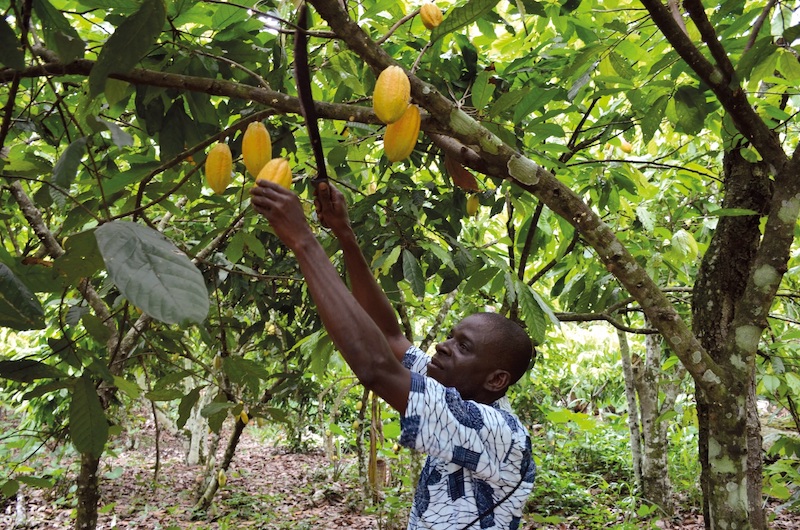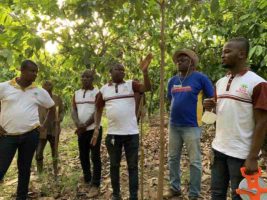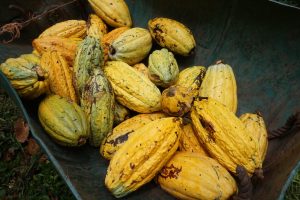WCF welcomes latest Ghana sector agreement tackling deforestation

A key step towards tackling deforestation in Ghana’s core cocoa growing regions has been made, as authorities sign an agreement with industry to accelerate combined conservation and restoration measures, reports Neill Barston.
The critical move, which has been overseen by the World Cocoa Foundation and the Forestry Commission of Ghana (GFC), comes in the wake of concerns from environmental groups surrounding the impact of a range of commercial activity on the region’s natural habitats over the past six decades.
Research from Global Forest Watch in 2019 highlighted the scale of the problem, with satellite mapping from the University of Maryland evaluating that there was a 60% increase in Ghana’s primary rainforest loss in 2018 compared to the previous year, which was found to be the highest in the world, with neighbouring Ivory Coast the second worst performer, registering a 28% increase in losses.
In subsequent studies, the charitable organisation, which produces real-time coverage of deforestation through digital mapping found that overall between 2001 and 2020, Ghana lost 1.31Mha of tree cover, equivalent to a 19% overall loss, which the government, alongside industry and civil organisations are jointly seeking to redress.
According to the WCF, the latest agreement will enable work with the Forestry Commission of Ghana (GFC) to build a partnership to further align existing schemes including the Ghana Cocoa Forest REDD+ Program (GCFRP) and the Cocoa & Forests Initiative (CFI) to achieve no deforestation commitments. The latter scheme, signed with cross-industry support in 2017, has made notable progress, with four million trees planted, and major gains in terms of mapping cocoa operations.
Furthermore, the cocoa organisation noted that the Memorandum of Understanding, signed by GFC and WCF, commits the parties to working together in six regions where the government of Ghana has made action to protect and restore forests a priority.
Significantly, work in these Hotspot Intervention Areas has already reportedly started, with active engagements in the Asunafo-Asutifi, Bia-Juaboso, Kakum and Sefwi-Bibiani landscapes.
It is aligned with commitments spelled out in the Ghana framework for action signed in November 2017 for the landmark Cocoa & Forests Initiative, a unique partnership of 35 companies, governments and cocoa-growing communities.

As part of the Memorandum of Understanding, GFC will facilitate the development of strategic initiatives, collaborate on protocols for data collection and ensure stronger monitoring on social and environmental issues. WCF is responsible for facilitating the coordination and convening the actions of the 35 cocoa and chocolate companies that have signed the Cocoa & Forests Initiative. WCF will also support monitoring and evaluation, innovation and private-public learning.
Chief Executive of the GFC, John Allotey, said: “this partnership represents a phenomenal collaboration with the private sector to ambitiously contribute to real and verifiable emission reductions in Ghana’s precious forest landscapes which are home to diverse forms of wildlife and also provide important livelihood options for rural dwellers.
“The GCFRP is already achieving significant impacts with inclusive governance arrangements and the GFC encourages other like-minded institutions to strategically partner with the program for visible impact at scale.”
“With our partner GFC, we aim to accelerate our journey towards forest positive cocoa,” said Richard Scobey, WCF’s President. “Ending cocoa-related deforestation requires all stakeholders to work together. Today, WCF and cocoa and chocolate companies are strengthening our collaboration with the government of Ghana.”
The Cocoa & Forests Initiative (CFI)
As reported by Confectionery Production, the CFI initiative is a public-private partnership to end cocoa-related deforestation and forest degradation and promote forest restoration, signed by 35 cocoa and chocolate companies and governments.
Among the original signatories for the initiative are including Mondelēz International, Nestlé, Mars, Hershey, Barry Callebaut, Lindt & Sprungli, Cemoi, Barry Callebaut, Godiva, General Mills, Cargill Ferrero, Olam, pladis, Ritter Sport, and Unilever.
Its aim is to collaborate within the framework and other stakeholders such as NGOs, farmer organisations and civil society organisations on the development and implementation of business-driven solutions.
In 2020, cocoa and chocolate companies announced major strides towards 2022 Cocoa & Forests Initiative targets with, for example, more than 4 million tree seedlings distributed to farmers to establish agroforestry systems and reforest degraded forests in Côte d’Ivoire and Ghana.
The Cocoa & Forests Initiative contributes to Sustainable Development Goals 13 (Climate Action) and 15 (Life on Land) and is aligned with the Paris Climate Agreement.

The Ghana Cocoa Forest REDD+ Program (GCFRP):
Meanwhile, the GFC and the Ghana Cocoa Board led in the design and development of the world’s first commodity-driven emission reductions program – the Ghana Cocoa Forest REDD+ Program (GCFRP).
The scheme covers 5.9 million hectares of the cocoa-forest mosaic landscape. The goal is to significantly reduce deforestation and forest degradation over a twenty-year period in a phased implementation approach by promoting climate-smart cocoa production, lower risk cocoa farming, landscape level land-use planning, strategic tree tenure reforms and forest rehabilitation interventions.
It is targeting significant enhancements in ecosystem resilience, increase in farmers’ yields, and generate multiple livelihood benefits underpinned by robust, transparent and inclusive governance structures.



